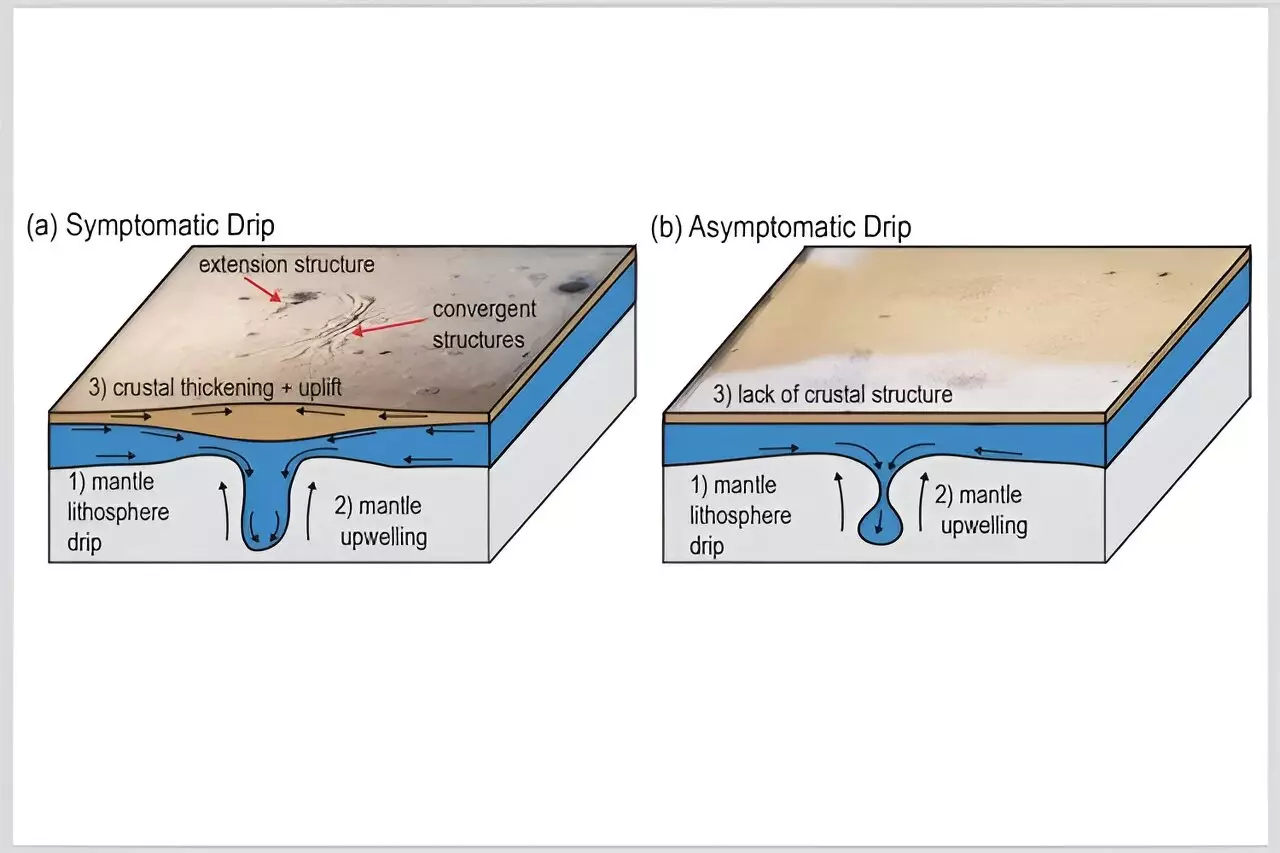Recent explorations into the enigmatic process of landscape evolution have shed light on the continually shifting geological features of the Konya Basin, situated in the heart of the Central Anatolian Plateau of Türkiye. Earth scientists at the University of Toronto have utilized satellite technologies alongside rigorous geological and geophysical data analyses to illustrate a captivating narrative: the basin is not merely a static geographical feature, but a dynamic entity undergoing profound changes over millions of years. This new understanding promotes a deeper exploration of plate tectonics and hints at phenomena that may affect other celestial bodies, such as Mars and Venus, which do not have Earth-like tectonic systems.
The significance of this research lies in its identification of an unforeseen mechanism behind the basin’s subsidence, which is attributed to what the scientists term “multi-stage lithospheric dripping.” This natural process emerges from the instability of the rocky material constituting the Earth’s crust and upper mantle, where the interaction between denser rock fragments and the more fluid mantle leads to noteworthy alterations in the landscape. As heavier rock materials detach beneath the surface and plunge into the mantle, the actions formulate prominent geographic formations, including deep basins and jagged mountain ranges.
The lead researcher, Julia Andersen, a Ph.D. candidate in Earth sciences, articulated a pivotal discovery while evaluating satellite imagery. The data revealed peculiar circular configurations within the Konya Basin, indicative of subsidence or deepening. Subsequent analyses of the subsurface geophysical dynamics unveiled seismic anomalies and a thickened crust, providing strong evidence for the presence of high-density materials — a clear signal of pending lithospheric dripping. This progressive understanding sheds light on how this unique geological activity shapes regions that are not just isolated but are part of a larger tectonic framework.
The investigative team draws parallel conclusions from their earlier study of the Arizaro Basin in the Andes, indicating that lithospheric dripping is a phenomenon that transcends geographical boundaries, manifesting significantly in plateau regions around the globe. Further supporting their claims, prior research had illustrated that the Central Anatolian Plateau has ascended approximately one kilometer over the last ten million years due to correlated lithospheric dripping processes. This raises complex questions about how geological forces synchronize within the Earth’s crust and how such processes interrelate over extensive periods and across various terrains.
The collaborative findings of Andersen and her co-authors led to a refreshing perspective on the symbiotic relationship between plateau uplift and basin formation. Their conclusions hint at an ongoing dance between uplift and subsidence, raising the possibility that these dual events do not exist in isolation. Instead, the emergence of basins can coincide with the slow rise of the surrounding plateau — a testament to the intricate balance of geological forces. As Russell Pysklywec, a professor and co-author of the study, stated, the initial drip of dense material initiated a cascading series of geological events, producing what they termed “daughter events” throughout the region.
To explore this idea further, the researchers employed innovative laboratory experiments to simulate the lithospheric dripping process. By constructing analog models in a controlled environment, the team effectively replicated geological conditions that contribute to these dynamic events. They utilized a specialized fluid to mimic Earth’s lower mantle and incorporated materials that represented the upper mantle and crust, revealing the principles governing subsurface interactions. The experiments spanned several hours, illustrating two distinct dripping phases that culminated in surface transformations without horizontal crust movements. The findings offer essential insights into how underlying processes can fundamentally alter our planet’s surface.
Implications for Planetary Science
What makes this research particularly intriguing is its potential implications for the understanding of other planetary bodies. While Earth features well-defined plate tectonics, planets like Mars and Venus exhibit different geological frameworks that may not fit traditional geological models. The revelations surrounding lithospheric dripping provide essential insights for planetary scientists studying similar processes elsewhere in the cosmos. By deciphering how planets evolve and undergo similar subsidence and geological transformations, we edge closer to a holistic understanding of planetary geology.
As this field of study unfolds, the research into the Konya Basin stands out as a crucial step in unraveling the mysteries of tectonic processes. It invites further inquiry and exploration of the dynamics that sculpt not only our planet but others in the solar system, reinforcing the notion that geology is an ever-evolving narrative that transcends Earth’s confines, reaching into the depths of cosmic exploration. The ongoing studies promise to foster deeper comprehension of the forces that govern planetary evolution, with future implications for both Earth-centered and extraterrestrial tectonics.


Leave a Reply